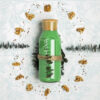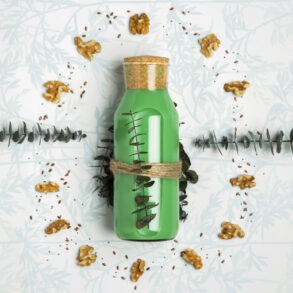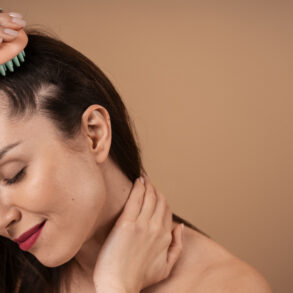Everyone wants that radiant, smooth, glowing skin, right? But no matter how many serums or creams you slather on, without exfoliation, you’re just piling products on a layer of dead skin. If you’re skipping this step in your skincare routine, you’re likely missing out on all the benefits that exfoliation has to offer. Whether you’re a skincare newbie or a seasoned enthusiast, this deep dive into exfoliation will walk you through everything you need to know—from types, benefits, and risks, to proper techniques and dermatologist-approved tips.
What is Exfoliation?
Definition and Purpose
Exfoliation is the process of removing dead skin cells from the surface of your skin. Our skin naturally sheds dead cells to make room for new ones approximately every 28 days. But over time, this process slows down due to aging, environmental stressors, and even our diet. When dead cells don’t shed completely, they can lead to dull skin, clogged pores, breakouts, and uneven texture.
This is where exfoliation comes in. By manually or chemically helping your skin slough off those dead cells, you’re essentially giving it a fresh start. Imagine your skin as a canvas: exfoliation is like priming it before painting. It creates the ideal surface for your moisturizers, serums, and treatments to absorb better and work more effectively.
Beyond just looking better, exfoliation helps with real skin health. It promotes cellular turnover, which is essential for healing, collagen production, and overall skin function. It’s not just a vanity step—it’s an essential one.
How Exfoliation Works on the Skin
The outermost layer of the skin, known as the stratum corneum, is made up of dead skin cells that serve as a protective barrier. Over time, this layer thickens with built-up debris and oil. Exfoliation works by either scrubbing this layer away (physical exfoliation) or dissolving the “glue” that holds these cells together (chemical exfoliation).
Think of it as sweeping your front porch. You could either brush the dirt off with a broom or use a hose to wash it down—both get the job done, but in different ways.
Types of Exfoliation
Exfoliation isn’t a one-size-fits-all process. Understanding the types helps you choose what’s best for your skin.
Physical (Mechanical) Exfoliation
This involves using a tool or gritty substance to physically scrub the skin. Some common examples include:
- Scrubs with microbeads, crushed walnut shells, or sugar
- Facial brushes (manual or electric)
- Konjac sponges
- Loofahs and washcloths
Common Tools and Products
- Face scrubs: Available in drugstores and often include natural exfoliants like apricot or sugar.
- Cleansing brushes: Devices like the Clarisonic (now discontinued but others exist) offer deep cleansing and exfoliation.
- Dermaplaning tools: These are specialized blades used to gently shave off dead skin and peach fuzz.
While effective, physical exfoliation can be harsh if overused or if the particles are too coarse. People with sensitive or acne-prone skin should be cautious.
Chemical Exfoliation
This uses acids or enzymes to dissolve dead skin cells. It sounds intense, but many chemical exfoliants are actually gentler and more effective than physical ones.
AHAs, BHAs, and Enzymes Explained
- AHAs (Alpha Hydroxy Acids): Like glycolic and lactic acid, they’re water-soluble and ideal for dry or sensitive skin.
- BHAs (Beta Hydroxy Acids): Such as salicylic acid, oil-soluble and perfect for oily or acne-prone skin.
- Enzymes: Derived from fruits like papaya and pineapple, enzymes are mild and work by breaking down keratin in dead cells.
Chemical exfoliation can help with pigmentation, uneven texture, and even fine lines. It often delivers more even results than scrubbing.
Enzymatic Exfoliation
This is a subset of chemical exfoliation but worth its own spotlight. Enzymatic exfoliants, often made from natural fruit enzymes, are perfect for sensitive skin types. They work by gently digesting the dead cells on the surface without affecting the healthy layers below.
How It Differs from Other Types
- No tingling or burning: Unlike acids, enzymes don’t usually irritate.
- Slower results: They’re gentle, so they require consistent use.
- Good for frequent use: Ideal for people who can’t tolerate acids but still want to exfoliate regularly.
Benefits of Exfoliation
Skin Renewal and Radiance
One of the biggest perks? That glow. By removing the layer of dead skin, you’re revealing newer, brighter cells underneath. Over time, exfoliation helps smooth out rough patches and boosts radiance. It’s like giving your skin a breath of fresh air.
You’ll notice improved texture, minimized pores, and an overall fresher appearance. Skin can look younger because fine lines and dullness are less visible when your skin is smooth and hydrated.
Plus, exfoliation can help reduce dark spots and hyperpigmentation by speeding up cell turnover, helping new, evenly pigmented cells reach the surface quicker.
Better Absorption of Skincare Products
Ever feel like your serum or moisturizer just sits on top of your skin? That could be because it’s blocked by a barrier of dead cells. Exfoliating clears the path for your products to sink in and actually work.
Think of it like unclogging a drain. Once it’s clear, everything flows better.
When you exfoliate regularly, you get the most out of your skincare routine—your expensive creams and serums aren’t going to waste.
Acne and Blemish Reduction
Clogged pores are a breeding ground for bacteria, which means more breakouts. Exfoliating helps keep your pores clear by removing excess oil, dirt, and skin cells before they have a chance to cause trouble.
Chemical exfoliants like salicylic acid are particularly good at penetrating deep into the pores and dissolving the gunk that causes pimples.
Regular exfoliation can lead to fewer blackheads, whiteheads, and overall breakouts. It also helps fade post-acne marks more quickly by promoting skin regeneration.
Disadvantages and Risks of Exfoliation
Over-Exfoliation and Skin Damage
Yes, you can have too much of a good thing. Over-exfoliating—especially with harsh physical scrubs or frequent acid use—can damage your skin barrier. This can lead to:
- Redness
- Flakiness
- Burning or stinging
- Increased sensitivity to products
Once your skin barrier is compromised, it’s harder for your skin to protect itself, which can lead to more breakouts, irritation, and even conditions like eczema or rosacea.
Moderation is key. If your skin starts feeling tight or inflamed, scale back.
How to Choose the Right Exfoliator for Your Skin Type
Choosing the right exfoliator isn’t just about picking the fanciest or most expensive product. It’s all about understanding your skin type and what it truly needs. Using the wrong exfoliator can do more harm than good, leading to irritation, breakouts, or dryness. Here’s how to choose the right one for your skin type:
Dry and Sensitive Skin
If your skin often feels tight, flaky, or prone to redness, it falls under dry or sensitive. These skin types require gentle care, and exfoliation must be done cautiously.
- Best choice: Enzyme exfoliators or mild AHAs like lactic acid.
- Frequency: Once a week or even every other week.
- What to avoid: Harsh scrubs, brushes, or high-concentration acids.
Lactic acid is a favorite for dry skin because it not only exfoliates but also hydrates. Look for products that combine exfoliants with soothing ingredients like aloe vera, chamomile, or hyaluronic acid.
Oily and Acne-Prone Skin
This skin type tends to produce excess sebum, leading to clogged pores, blackheads, and pimples. Exfoliation is essential to keep things under control.
- Best choice: BHAs, especially salicylic acid. Clay masks with exfoliating properties can also help.
- Frequency: 2-3 times a week, depending on how your skin reacts.
- What to avoid: Overuse of physical exfoliants, which can aggravate acne.
Salicylic acid penetrates deep into pores, clearing out excess oil and reducing inflammation. It’s your go-to if you battle regular breakouts.
Combination and Normal Skin
Combination skin typically has an oily T-zone and dry or normal cheeks, while normal skin isn’t too oily or dry. These types can handle a wider variety of exfoliants.
- Best choice: A balanced exfoliation routine alternating between AHAs and BHAs or enzyme exfoliators.
- Frequency: 1-3 times a week, depending on your skin’s reaction.
- What to avoid: Sticking to one exfoliant type for too long—mix it up based on how your skin behaves seasonally.
You can even “multi-exfoliate,” meaning using different exfoliants on different areas of the face. Use a BHA on your nose and chin, and a milder enzyme exfoliant on your cheeks.
How Often Should You Exfoliate?
Exfoliation frequency isn’t one-size-fits-all. It depends on several factors—your skin type, the exfoliation method, environmental conditions, and even your age.
Guidelines by Skin Type
Let’s break it down based on skin type again:
- Oily/Acne-Prone Skin: 2-3 times a week. BHAs work best, and salicylic acid can be used in cleansers or spot treatments.
- Dry/Sensitive Skin: Once a week or even less. Stick with gentle enzymes or low-percentage AHAs.
- Normal/Combination Skin: 1-3 times a week. Alternate between physical and chemical exfoliants for balance.
Pay attention to how your skin feels. If it’s red, tight, or burning, you might be overdoing it.
Seasonal and Age Considerations
- Winter months: Skin tends to get drier, so reduce exfoliation frequency and focus on hydration.
- Summer months: You may need more frequent exfoliation due to sweat, sunscreen buildup, and oil.
- Aging skin: As we age, cell turnover slows. Gentle, consistent exfoliation helps maintain brightness and reduce age spots. AHAs like glycolic acid are ideal.
Also, teenagers might need more frequent exfoliation to combat oiliness, while those over 40 may benefit more from regular but milder exfoliation to boost cell renewal.
DIY vs. Store-Bought Exfoliators
With so many DIY skincare hacks floating around on social media, it’s tempting to make your own exfoliator at home. But is that really the best route?
Natural Ingredients for Home Exfoliation
DIY exfoliators can be effective when made with the right ingredients:
- Oatmeal + Honey: Great for sensitive skin. Oatmeal soothes while gently buffing away dead skin.
- Brown Sugar + Olive Oil: A simple scrub for body exfoliation. Sugar exfoliates while olive oil moisturizes.
- Papaya or Pineapple mash: These fruits contain natural enzymes that dissolve dead skin cells.
Homemade exfoliants are often more eco-friendly and free of harmful chemicals. But they lack the precision and safety of commercial products.
When to Opt for Professional Products
Store-bought exfoliators are formulated under controlled lab conditions and go through safety testing. They often include pH-balanced ingredients, preservatives to avoid spoilage, and clinical studies backing their effectiveness.
Professional products:
- Provide consistent results
- Contain clinically-proven actives like glycolic acid, salicylic acid, or lactic acid
- Offer long shelf lives
The choice boils down to your comfort level. If you’re new to exfoliation or have sensitive skin, commercial products may be safer. DIYs are best when you know your ingredients well and want to keep it natural.
How to Exfoliate Correctly
Exfoliating sounds simple—you just scrub, right? But doing it wrong can damage your skin more than it helps. Here’s how to get it right, step-by-step.
Step-by-Step Guide
- Start with clean skin: Always cleanse your skin before exfoliating to remove makeup, dirt, and oil.
- Choose your exfoliant wisely: Use a physical exfoliant for quick surface smoothing, or a chemical one for deeper action.
- Be gentle: Apply the product with light pressure. Don’t scrub like you’re cleaning a dirty dish.
- Avoid sensitive areas: Skip under eyes and broken skin.
- Rinse thoroughly: Use lukewarm water. Hot water strips the skin of natural oils.
- Follow up with moisturizer: Lock in hydration immediately after exfoliating.
- Use sunscreen: Your skin is more vulnerable post-exfoliation.
What to Avoid During Exfoliation
- Using multiple exfoliants at once: Layering a scrub with a chemical exfoliant is a recipe for irritation.
- Exfoliating right after shaving or waxing: Give your skin time to recover.
- Skipping sunscreen: Newly exposed skin is more prone to sun damage.
- Exfoliating broken or sunburnt skin: Wait until it heals.
Being gentle and mindful is key. Exfoliation should feel like self-care, not self-harm.
Exfoliation Myths and Facts
The skincare world is full of myths, especially around exfoliation. Let’s bust some common ones.
Common Misconceptions
- “More exfoliation means better skin.”
Not true. Overdoing it can lead to damage, not glow. - “Scrubs are better than acids.”
Both have their place. Scrubs work on the surface; acids can penetrate deeper. The best choice depends on your skin. - “Tingling means it’s working.”
A slight tingle may be okay, but burning or stinging is a red flag. - “Exfoliation lightens skin.”
It can help even out skin tone by removing pigmented dead cells, but it doesn’t change your natural skin color.
Scientific Truths
- Exfoliation promotes collagen production: Especially true with AHAs, which stimulate skin cell renewal.
- Exfoliation helps skincare products absorb better: It clears the path for deeper penetration.
- Chemical exfoliants are often gentler than scrubs: Despite the scary name, acids like lactic or mandelic are very skin-friendly when used correctly.
Don’t fall for buzzwords or hype—go with what science and your skin tell you.
The Role of Exfoliation in Anti-Aging
Aging is a natural process, but exfoliation can help slow down visible signs and keep your skin looking youthful and vibrant. No, it’s not a fountain of youth—but it’s a solid step in any age-defying skincare routine.
Promoting Collagen Production
Collagen is the protein responsible for maintaining your skin’s firmness, elasticity, and structure. As we age, collagen production slows down, leading to sagging, fine lines, and wrinkles. Exfoliation—particularly chemical exfoliation—can help stimulate the skin to produce more collagen.
Here’s how:
- AHAs like glycolic acid work beneath the surface of the skin to speed up cell turnover.
- This stimulates fibroblasts, which are responsible for collagen synthesis.
- Over time, skin becomes firmer, smoother, and more resilient.
So while exfoliation doesn’t directly “add” collagen, it signals your skin to make more of it—a process similar to how working out strengthens your muscles.
Fading Age Spots and Fine Lines
Dead skin cells and pigmentation can cling to the outer layer of your skin, making fine lines more visible and your complexion uneven. Exfoliation helps remove this build-up, revealing newer cells underneath and giving your skin a more even tone.
Key anti-aging benefits include:
- Diminished fine lines: Skin appears smoother.
- Reduced hyperpigmentation: Age spots and sun damage lighten over time.
- Refined texture: Skin feels more supple and plump.
Adding a retinol-based serum after exfoliating can supercharge your anti-aging efforts—just be sure to moisturize and use SPF the next day.
Exfoliation for Different Parts of the Body
When people think of exfoliation, the face is often the focus. But your entire body benefits from exfoliation—and each area requires different care.
Face vs. Body
The skin on your body is thicker and can usually handle more rigorous exfoliation. While your facial skin needs gentler, more refined methods, the body can tolerate firmer scrubs and exfoliating tools.
- Facial exfoliation: Use mild AHAs, BHAs, or enzyme-based products. Avoid scrubs with large, rough particles like crushed shells.
- Body exfoliation: Use sugar scrubs, salt scrubs, or dry brushing. Pay special attention to rough areas like elbows, knees, and heels.
Your back, chest, and arms can also benefit from exfoliation, especially if you deal with body acne. A salicylic acid body wash can help keep pores clear.
Exfoliating Lips, Scalp, and Feet
- Lips: Use a sugar scrub or soft toothbrush to remove flakiness. Follow with a balm.
- Scalp: Exfoliate with a clarifying scrub or shampoo once a week to remove product buildup and promote healthy hair growth.
- Feet: A pumice stone or foot file can help remove calluses. Soak your feet first for best results.
Exfoliating these areas regularly not only improves their appearance but also boosts circulation and overall skin health.
Table: Advantages vs. Disadvantages of Exfoliation
Here’s a quick-reference table to weigh the pros and cons of exfoliation:
| Advantages | Disadvantages |
|---|---|
| Removes dead skin cells for a brighter complexion | Over-exfoliation can damage skin barrier |
| Promotes collagen production | Can cause redness, irritation, or sensitivity |
| Improves skin texture and tone | Chemical exfoliants may trigger allergic reactions |
| Helps clear acne and prevent breakouts | Not suitable for all skin types without guidance |
| Enhances product absorption | Requires caution when used with other actives |
| Reduces appearance of fine lines and wrinkles | Improper tools (like rough scrubs) can cause microtears |
| Speeds up skin renewal | Increased sun sensitivity post-exfoliation |
Balance is everything. To make exfoliation work for you, stick to a routine that fits your skin’s unique needs.
Post-Exfoliation Skincare
Exfoliation is only half the battle. What you do afterward can make or break your skincare routine. After exfoliating, your skin is more vulnerable—and also more receptive to hydration and nourishment.
Hydration and Moisturizing
Once you’ve exfoliated, you’ve cleared the way for your products to sink deep into the skin. This is your moment to feed your skin what it craves: hydration.
- Use a hydrating toner or essence: Look for ingredients like hyaluronic acid or rose water.
- Apply a rich moisturizer: Especially if you’ve used a chemical exfoliant. Choose products with ceramides, peptides, or glycerin.
- Add a serum: Now’s the time for your skin to benefit from active ingredients like niacinamide, vitamin C, or retinol (on alternate days).
Dry or tight skin after exfoliating is a sign your skin is thirsty. Always quench it!
Importance of Sunscreen
Exfoliated skin is newer, thinner, and more sensitive to UV rays. That glow you’ve worked hard for? It’ll disappear fast under sun damage if you don’t protect it.
- Use a broad-spectrum SPF 30 or higher: Every single day, no exceptions.
- Reapply: Especially if you’re outdoors or sweating.
- Avoid direct sun exposure immediately after exfoliating: Let your skin recover indoors if possible.
Sun damage undoes all the benefits of exfoliation. Think of sunscreen as the armor that keeps your skin safe.
Best Practices and Tips from Dermatologists
Who better to trust than the skin experts themselves? Dermatologists agree that while exfoliation is powerful, it must be done mindfully.
Do’s and Don’ts
Do:
- Patch test new exfoliants.
- Start slow—1–2 times per week and build up.
- Moisturize and use SPF religiously.
- Choose exfoliants appropriate for your skin type.
- Alternate days if using retinol or other actives.
Don’t:
- Mix too many active ingredients (e.g., retinol + strong AHA).
- Use scrubs with jagged particles like crushed walnut shells.
- Exfoliate irritated or sunburned skin.
- Forget your neck and décolletage.
Recommended Products
Here are a few dermatologist-recommended products across various skin types:
| Skin Type | Recommended Exfoliator |
|---|---|
| Dry/Sensitive | Paula’s Choice 8% AHA Gel, The Ordinary Lactic Acid 5% |
| Oily/Acne-Prone | COSRX BHA Blackhead Power Liquid, Neutrogena Pore Cleanser |
| Normal/Combo | Pixi Glow Tonic, The Inkey List Glycolic Acid |
Remember, even the best product won’t help if it’s wrong for your skin type.
Conclusion
Exfoliation isn’t just another skincare trend—it’s a foundational step that can completely transform your skin when done correctly. Whether you’re aiming for a brighter complexion, fewer breakouts, or a more youthful appearance, exfoliation is one of the most effective and accessible tools in your skincare arsenal.
But here’s the deal: more isn’t always better. The key to reaping the rewards of exfoliation lies in understanding your skin’s unique needs, choosing the right type of exfoliant, and sticking to a routine that keeps your skin balanced—not stripped. Think of exfoliation like seasoning a dish: the right amount enhances the flavor, but too much can ruin it.
By integrating exfoliation with the rest of your skincare steps—like hydration, nourishment, and protection—you can unlock that fresh, glowy, healthy skin that we all chase. Whether you’re making a DIY scrub at home or investing in a top-tier AHA serum, consistency and care will always pay off.
So go ahead, give your skin that reset. Just remember: exfoliate wisely, moisturize generously, and never, ever forget your sunscreen.
FAQs
1. Can I exfoliate every day?
Generally, no. Daily exfoliation can over-strip your skin and damage the protective barrier. Most skin types do well with 2–3 times a week. Sensitive skin might only need exfoliation once a week. Always listen to your skin—if it feels irritated or tight, you’re doing too much.
2. Is exfoliation safe during pregnancy?
Yes, but with caution. Avoid high-strength retinoids or strong acids. Opt for gentle AHAs like lactic acid or natural enzyme exfoliants. It’s always best to consult your OB-GYN or dermatologist to ensure your routine is baby-safe.
3. Which is better, physical or chemical exfoliation?
It depends on your skin type. Chemical exfoliation is generally more consistent and less abrasive, making it ideal for most skin types. Physical exfoliants can be effective, but they carry a higher risk of irritation or microtears, especially if the particles are rough or used with too much force.
4. Can exfoliation help with hyperpigmentation?
Absolutely. Regular exfoliation helps fade dark spots by speeding up cell turnover, which brings newer, more evenly pigmented cells to the surface. AHAs like glycolic acid and BHAs like salicylic acid are particularly effective for treating pigmentation issues over time.
5. Should men exfoliate too?
Definitely. Men’s skin tends to be thicker and oilier, making exfoliation essential for preventing clogged pores and ingrown hairs. A good exfoliation routine before shaving can also result in a smoother, irritation-free shave. It’s skincare, not self-care limited by gender.
Please don’t forget to leave a review.










